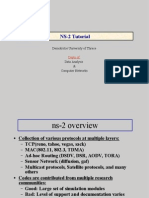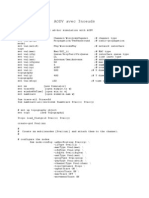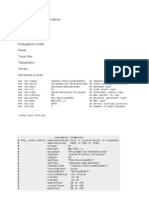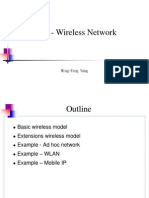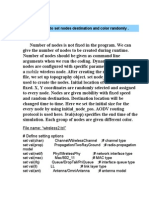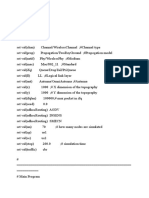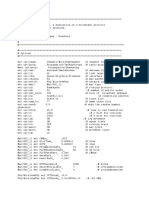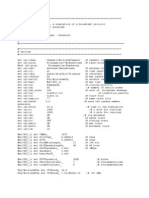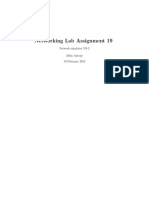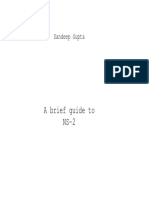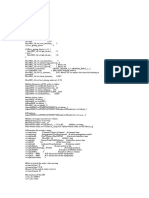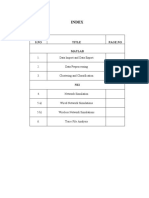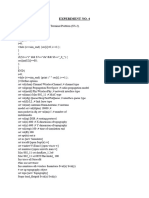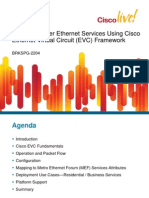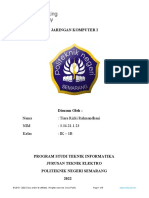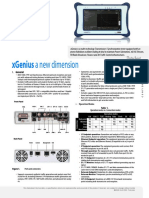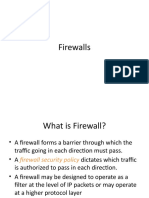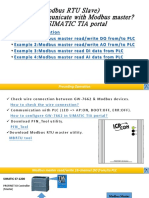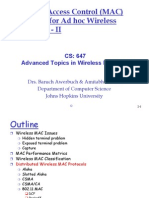0% found this document useful (0 votes)
89 views14 pagesWireless Communication: Presented by Vinithra .J 10MIT0056
This document discusses implementing and demonstrating ad hoc wireless networks using the Network Simulator 2 (ns-2). It describes setting up a simulation with nodes, configuring routing protocols like DSDV, DSR, and AODV, generating node movement and network traffic, and outputting trace files. The goal is to simulate different ad hoc routing protocols and compare their performance metrics like throughput.
Uploaded by
Boopalan JeevaCopyright
© Attribution Non-Commercial (BY-NC)
We take content rights seriously. If you suspect this is your content, claim it here.
Available Formats
Download as PPT, PDF, TXT or read online on Scribd
0% found this document useful (0 votes)
89 views14 pagesWireless Communication: Presented by Vinithra .J 10MIT0056
This document discusses implementing and demonstrating ad hoc wireless networks using the Network Simulator 2 (ns-2). It describes setting up a simulation with nodes, configuring routing protocols like DSDV, DSR, and AODV, generating node movement and network traffic, and outputting trace files. The goal is to simulate different ad hoc routing protocols and compare their performance metrics like throughput.
Uploaded by
Boopalan JeevaCopyright
© Attribution Non-Commercial (BY-NC)
We take content rights seriously. If you suspect this is your content, claim it here.
Available Formats
Download as PPT, PDF, TXT or read online on Scribd
/ 14
